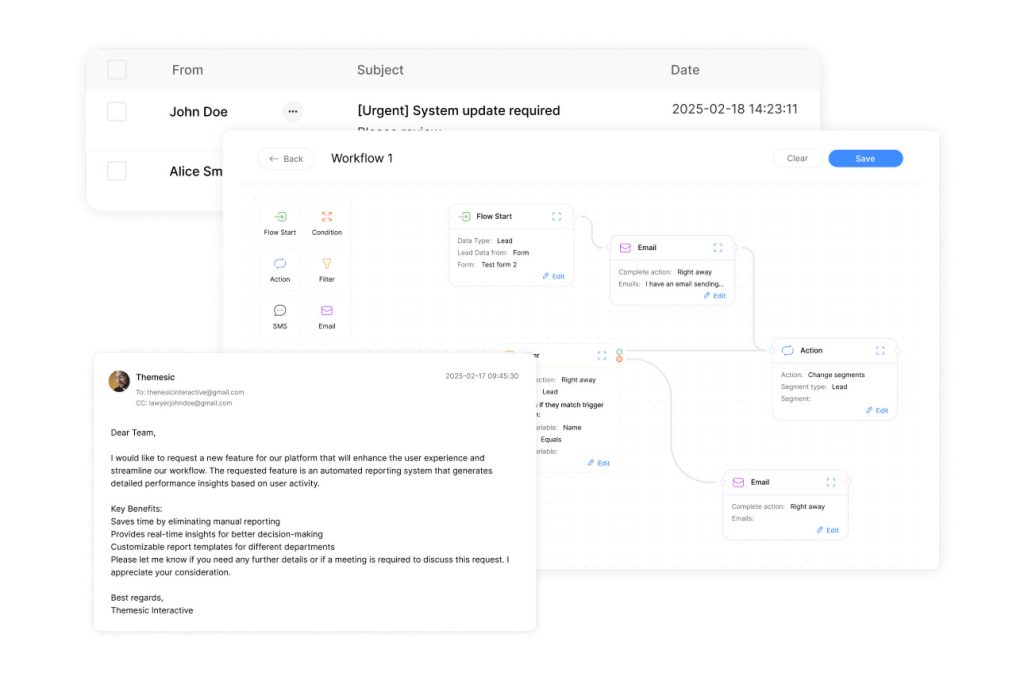Simplifying Approval Process Management for Efficient Operations

In today’s fast-paced business environment, structured systems for coordinating reviews have become essential. Teams across industries face mounting pressure to deliver quality work while meeting tight deadlines. Without clear guidelines, tasks often stall in endless email chains or get lost between departments.
Effective oversight transforms chaotic review cycles into streamlined workflows. For example, creative teams using organized systems reduced approval cycles from eight days to just two. This shift prevents costly errors and ensures alignment with budgets, compliance standards, and strategic goals.
Companies lacking these frameworks often struggle with missed deadlines and frustrated employees. Clear review steps eliminate confusion about responsibilities. They also create audit trails that improve accountability across teams.
When implemented strategically, these systems become competitive advantages. Decision-making accelerates, collaboration strengthens, and resources get used more effectively. The key lies in designing workflows that balance thorough evaluation with operational speed.
Key Takeaways
- Modern organizations require structured approaches to handle multi-department approvals
- Streamlined systems reduce delays by up to 75% compared to ad-hoc methods
- Proper oversight prevents compliance risks and quality issues
- Documented workflows improve accountability and reduce team frustration
- Balancing speed with comprehensive reviews drives better business outcomes
Overview of Approval Process Management

Streamlined review mechanisms form the backbone of operational efficiency. These systems guide tasks through predefined steps while maintaining quality standards. For teams handling sensitive deliverables – from marketing campaigns to financial reports – structured validation ensures alignment with organizational goals.
Defining the Review Pathway
An approval workflow establishes clear checkpoints for tasks moving across departments. Marketing groups might require brand compliance checks before content publication. Engineering teams often implement safety reviews during product prototyping phases. Each step prevents errors that could derail projects or violate regulations.
Importance for Diverse Teams
Finance departments rely on these systems for expense tracking, while creative teams use them for design iterations. Cross-functional groups benefit most when workflows synchronize input from legal, technical, and creative stakeholders. Documented pathways eliminate role ambiguity, letting teams focus on execution rather than chasing confirmations.
When accounting teams process invoices, multi-level verification prevents financial discrepancies. Similarly, product developers use phased reviews to catch design flaws early. Tailored workflows adapt to specific needs while maintaining organization-wide consistency in decision-making. Incorporating automated tools enhances these processes, ensuring that each step is followed without delay. By streamlining invoice approval workflow, organizations can reduce processing time significantly and improve transparency. This efficiency not only bolsters team productivity but also strengthens vendor relationships by facilitating timely payments.
Core Elements Within an Approval Workflow
Effective organizational systems rely on well-defined components to maintain momentum. Five critical elements transform fragmented reviews into cohesive workflows. These components ensure tasks move forward securely while meeting operational demands.
Submission Documentation and Approver Roles
Clear submission standards prevent delays. Whether handling invoices or project proposals, standardized formats reduce back-and-forth queries. Approvers need complete data to make informed decisions quickly.
Defined roles eliminate confusion about who holds decision power. Marketing teams might route designs to brand managers first, while financial reports go to department heads. Criteria for acceptance or rejection must align with organizational policies.
Permission Levels and Due Dates
Access controls protect sensitive data. Junior staff might view submissions but not edit them, while managers gain full authority. This layered security minimizes errors and unauthorized changes.
Deadlines keep workflows on track. Automated alerts notify reviewers when tasks approach due dates. Teams using timed systems resolve 80% of tasks faster than those relying on manual follow-ups.
| Element | Purpose | Impact |
|---|---|---|
| Submission Documents | Standardize information collection | Reduces revision cycles by 40% |
| Approvers | Assign decision authority | Cuts response time by 35% |
| Permission Levels | Control data access | Lowers security incidents by 60% |
| Due Dates | Enforce timelines | Prevents 80% of delays |
| Logs | Track action history | Resolves disputes 3x faster |
Combining these elements creates adaptable frameworks. They scale with company growth and shifting priorities without sacrificing oversight. Teams maintain agility while upholding compliance and quality standards.
Step-by-Step Guide to Building Your Approval Process
Organizations achieve faster sign-offs by designing intentional review frameworks. This guide outlines practical steps to create approval pathways that balance speed with oversight. Start with these foundational actions to transform chaotic validations into structured systems. By establishing clear roles and responsibilities, organizations can streamline their review procedures, ensuring that all stakeholders are aligned. Incorporating feedback loops will further enhance the system, allowing for quicker adjustments and continuous improvement. Implementing effective approval process strategies fosters a culture of accountability and speed, ultimately leading to more efficient project completions. By establishing clear criteria for approvals, teams can streamline decision-making and reduce bottlenecks. Additionally, incorporating feedback loops ensures continuous improvement, allowing organizations to master approval processes effectively. Ultimately, this clarity empowers teams to navigate complexities with increased confidence and efficiency.
Identifying Tasks Requiring Approval
Begin by analyzing current operations. Teams should categorize activities needing formal checks versus routine actions. Marketing groups might flag campaign budgets, while HR departments track policy updates.
A comprehensive audit reveals where structured oversight adds value. Focus on high-risk areas like financial commitments or compliance-sensitive deliverables. This prioritization prevents overloading systems with unnecessary reviews.
Mapping Out the Workflow Stages
Visual diagrams clarify how requests move between teams. Flowcharts should show decision points, escalation paths, and handoff protocols. Technical teams often use swimlane diagrams to track cross-departmental movements.
Assign stakeholders based on expertise rather than hierarchy. Legal teams review contracts early, while designers approve visuals before client submissions. Time-bound steps keep each phase moving forward.
Test new workflows through pilot projects. Collect feedback to refine stages and remove redundant checks. Successful implementations typically reduce revision cycles by 30-50% within six months.
Effective Approval Process Management Practices

Delayed decisions cost companies more than just time—they erode stakeholder trust and market position. Creative teams waste eight days on average navigating sign-offs according to 2023 data. Strategic practices transform these pain points into opportunities for operational excellence.
Reducing Bottlenecks and Delays
Systematic workflow analysis reveals where tasks pile up. Marketing teams often stall at legal reviews, while engineering groups face prototype testing logjams. Targeted solutions like escalation protocols keep work moving when primary reviewers are unavailable.
Automated alerts cut follow-up time by 40% compared to manual reminders. Performance dashboards track cycle patterns, exposing recurring holdups. Teams using these tools resolve 68% of delays before deadlines approach.
- Map approval pathways to identify redundant checks
- Set response expectations with enforceable SLAs
- Implement tiered review systems for complex deliverables
Establishing Clear Communication Channels
Scattered email threads cause 73% of miscommunications in review cycles. Centralized platforms standardize request formats and feedback mechanisms. Design teams using dedicated portals reduced revision rounds by 55%.
Real-time notifications keep stakeholders aligned without inbox overload. Escalation matrices define alternate contacts for urgent decisions. This structure prevents 82% of approval stalls caused by absent reviewers.
Standardized response templates ensure actionable feedback. Legal teams using predefined checklists approve contracts 30% faster. Clear protocols eliminate vague responses that prolong revision cycles.
Real-World Applications in Marketing, Design, and Product Development
Structured validation systems drive results across industries by aligning creative vision with operational realities. Teams that implement tailored review frameworks consistently outperform competitors in speed-to-market and error reduction.
Design and Marketing Validation Examples
A global agency streamlined creative work using four-stage checks. Concepts first go to creative directors for brand alignment. Marketing specialists then verify audience relevance before legal teams screen for compliance. Final client reviews focus on strategic fit.
Campaign development teams reduced revisions by 45% using phased sign-offs. Copy and design elements get simultaneous checks from brand guardians. Social media experts then optimize formats before legal validation. This approach maintains quality while accelerating launches.
Product Development Case Studies
Hardware manufacturers cut prototype cycles by 33% with cross-department reviews. Engineers validate technical specs first. Customer service teams then assess repair feasibility before marketing confirms market appeal. Executive reviews focus on ROI projections.
One tech startup reduced manufacturing errors by 60% using documented checkpoints. Early collaboration between engineering and marketing teams identified packaging issues before production. Clear content guidelines ensured all stakeholders used unified evaluation criteria.
These models demonstrate how intentional review steps balance innovation with practicality. Teams maintain creative freedom while meeting project requirements and compliance standards.
Leveraging Advanced Software for Approval Workflows

Cutting-edge solutions transform cumbersome review tasks into efficient digital operations. Teams using modern platforms resolve validation cycles 65% faster than those relying on manual methods. These tools eliminate misplaced files and unclear feedback loops through intelligent design.
Core Capabilities of Modern Systems
Unified dashboards give stakeholders real-time visibility into pending tasks and decision timelines. Automated routing ensures materials move through predefined workflow stages without manual oversight. Tools like Filestage demonstrate how template functionality standardizes repeatable validation paths while allowing custom adjustments.
Version tracking prevents confusion by maintaining clear revision histories. Mobile access lets approvers respond from any device, reducing delays caused by offline reviewers. Analytics features identify recurring bottlenecks, enabling continuous optimization of digital workflows.
Seamless Ecosystem Integration
Leading platforms connect with business-critical tools like Slack and Microsoft Teams. This integration automatically pushes notifications into existing communication channels. Project data syncs between systems, eliminating duplicate entries and ensuring all teams reference current information.
Financial groups using integrated solutions report 40% fewer data entry errors. Marketing teams benefit from synchronized calendars that align approval deadlines with campaign schedules. These connections create frictionless environments where workflows adapt to organizational needs rather than disrupt them.
Strategies for Overcoming Common Approval Bottlenecks
Business teams often hit roadblocks when review systems lack structure. Scattered requests across emails, chat platforms, and spreadsheets create chaos. Stakeholders waste hours hunting for updates or clarifying requirements. Structured strategies restore order by addressing two critical pain points: fragmented communication and unclear responsibilities.
Streamlining Communication Processes
Centralized hubs eliminate scattered feedback. Teams using single platforms for submissions cut revision rounds by 50%. Marketing groups, for instance, reduced campaign launch delays by routing all creative assets through unified dashboards.
Standardized request forms ensure stakeholders receive complete information upfront. Legal teams report 35% faster contract reviews when requirements include predefined compliance checklists. Automated alerts keep everyone informed without inbox overload.
Ensuring Stakeholder Accountability
Clear escalation paths prevent decision paralysis. When primary reviewers miss deadlines, alternate approvers receive automatic prompts. Sales teams using tiered systems resolved 72% of pricing approval delays within 24 hours.
Performance dashboards expose chronic bottlenecks. Finance departments identified budget review holdups by tracking response patterns. Targeted coaching improved department-wide turnaround times by 40% in three months.
Regular training sessions maintain system effectiveness. New hires learn workflow protocols during onboarding, while veterans refresh skills through quarterly workshops. This investment reduces errors caused by misunderstood roles.
Integrating Automation and Compliance in Your Workflow

Combining automated systems with compliance checks reshapes how teams validate critical tasks. Digital tools now document every action while enforcing security protocols. This fusion creates self-regulating frameworks that protect quality and legality without sacrificing speed.
Enhancing Transparency Through Automation
Smart platforms generate real-time activity logs accessible to authorized stakeholders. Marketing teams track campaign revisions from concept to launch, while finance groups monitor invoice routing. Automated workflows eliminate guesswork by timestamping decisions and preserving version histories.
Role-based permissions ensure sensitive data stays protected. Legal teams access contract clauses engineers can’t view, maintaining confidentiality. These controls simplify audits since every approval step leaves verifiable digital traces.
Maintaining Legal and Internal Compliance
Systems flag high-risk requests using customizable rules. Healthcare organizations automatically route patient data reviews to privacy officers. Manufacturing teams trigger safety inspections when designs exceed material thresholds.
Prebuilt templates align checks with industry regulations like GDPR or SOX. Financial institutions reduce reporting errors by 52% using standardized compliance filters. Continuous policy updates keep frameworks current as laws evolve.

